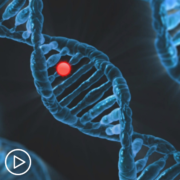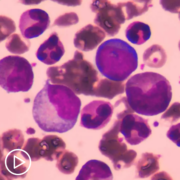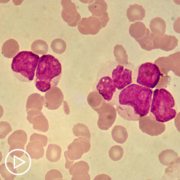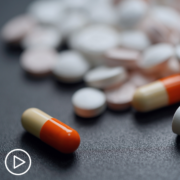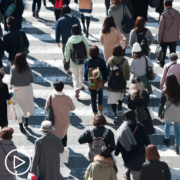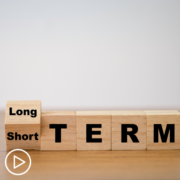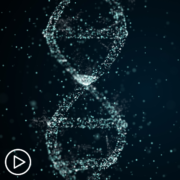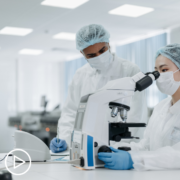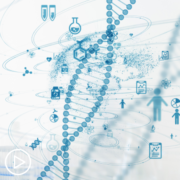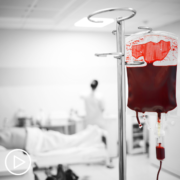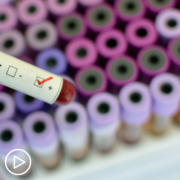A Look at Treatment Strategies for High-Risk AML Patients
A Look at Treatment Strategies for High-Risk AML Patients from Patient Empowerment Network on Vimeo.
What acute myeloid leukemia (AML) treatments are available for high-risk patients? Dr. Naval Daver from the University of Texas MD Anderson Cancer Center discusses various mutations, potential for cure, and clinical trials. Learn about the outlook for high-risk AML treatments.
[ACT]IVATION TIP from Dr. Daver: “The best way to get up to these agents is to go on clinical trials and incorporate these therapies, both in the frontline setting as well as in the relapsed refractory setting.”
Download Resource Guide en español
Related Resources:

What Are Some Clinical Predictors for Relapse in Acute Myeloid Leukemia? |

Assessing Untreated AML Patients Who Are Ineligible for Intensive Chemotherapy |

|
Transcript:
Art:
Dr. Daver, what treatment strategies are available for high-risk AML patients?
Dr. Naval Daver:
High-risk AML patients includes a group of a number of different mutations, and cytogenetic abnormalities, this includes TP53 mutation, as well as adverse cytogenetics, which includes chromosome 17, deletion 5, deletion 7, as well as complex carrier type. This entire group historically had a poor outcome and has had limited responses to traditional intensive chemo, even if we achieve responses there, usually short-lived.
We do have some patients where we are able to achieve remission with intensive chemo or with azacitidine-venetoclax (Vidaza-Venclexta) and transition and transmission them transplant with about 25 to 30 percent potentially achieving a long-term remission and possible cure.
But aside from that, there is very little potential to cure these patients with just traditional intensive chemo, venetoclax in this area, there has been developments with the emergence new class of immunotherapy drugs, called CD47 antibodies, the one that’s most advanced in this field is a drug called magrolimab, and we are evaluating the drugs such as magrolimab in combination with azacitidine as well as in combination with azacitidine-venetoclax and are seeing high remission rates, both in TP53 mutated and TP53 wild type.
So this pathway that works by activating a macrophages or the immune system to attack the tumor cells, seems to be in some way mutation agnostic with response rates being maintained even in the traditional high-risk subsets, especially such as TP53 and complex cytogenetics for some of the other high-risk groups such as MLL, we’re using targeted therapies like menin inhibitors, and these seem to work well in those patients who have these adverse cytogenetic molecular abnormalities, so there is progress, and we think that the CD47 antibody field and hopefully the main inhibitor feed will be able to improve outcomes in these traditionally molecular cytogenetic subsets.
My activation point related to this question is for high-risk mutations and cytogenetic commonalities such as TP53 complex carrier chromosome 17 MLL, best hope at this time is in clinical trials evaluating novel therapies such as CD47 antibodies and menin inhibitors. These are not yet FDA-approved, but based on emerging data from the ongoing Phase I, II studies, we think that there is a good chance they will be approved in the future.
However, this time, the best way to get up to these agents is to go on clinical trials and incorporate these therapies, both in the frontline setting as well as in the relapsed refractory setting.

